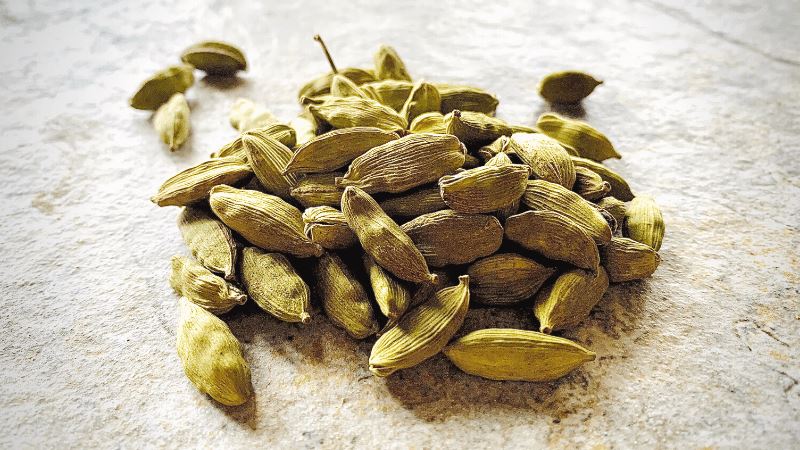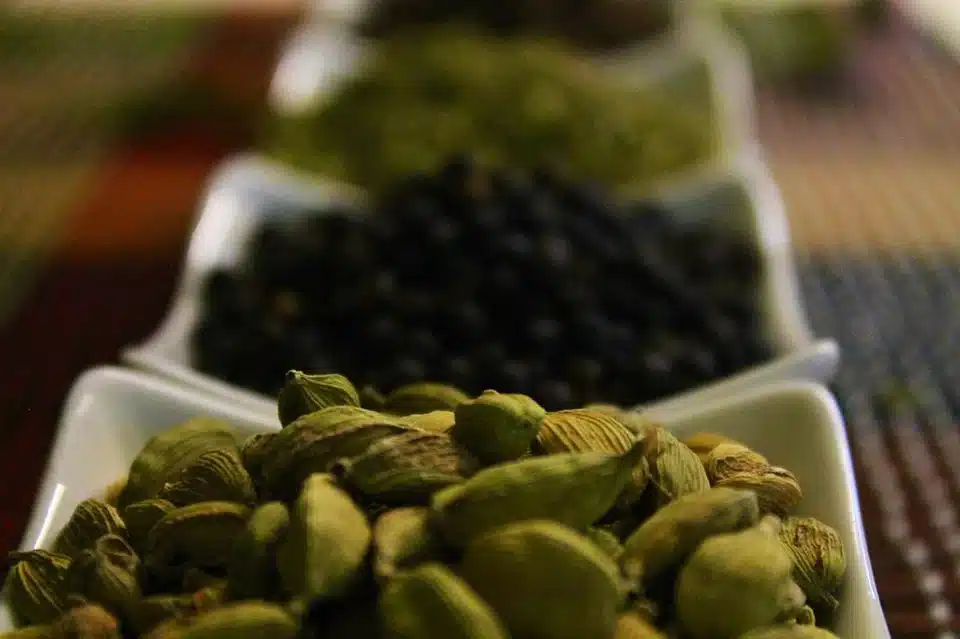Blog
What is the aroma and taste of cardamom?

Cardamom, often hailed as the “queen of spices,” is more than just a culinary ingredient; it’s an aromatic experience. Its captivating essence tantalizes the senses, offering a complex symphony of scents and flavors that leave a lasting impression. Unraveling the aroma and taste of cardamom is like embarking on a journey through a vibrant spice garden, encountering unexpected twists and delightful surprises.
The initial encounter with cardamom is often through its aroma. Whole cardamom pods, when crushed or cracked open, release a wave of fragrance that is both invigorating and comforting. The dominant notes are citrusy and sweet, reminiscent of lemons and oranges, but with an underlying warmth that hints of ginger or pepper. There’s also a touch of mintiness, adding a refreshing quality to the overall scent. This unique combination is attributed to the essential oils present in cardamom, including limonene, cineole, and terpinyl acetate. These aromatic compounds create a dynamic interplay, offering a citrusy zestiness balanced by a hint of minty coolness and a warming spice undertone.
As the aroma unfolds, so too does the fascinating taste of cardamom. The first bite offers a burst of sweetness, akin to biting into a ripe citrus fruit. However, this sweetness is quickly intertwined with a gentle warmth that spreads across the palate. This warmth is not fiery or overpowering but rather a pleasant sensation that lingers and builds. Subtly woven into the sweetness and warmth is a hint of peppery spice, adding a touch of complexity and depth. The minty coolness, initially sensed in the aroma, reappears on the taste buds, providing a refreshing counterpoint to the sweetness and warmth.
The overall taste of cardamom is truly a symphony of sensations. It’s a beautiful dance between sweet and warm, citrusy and minty, all brought together with a touch of peppery spice. This unique flavor profile is not singular; it can shift and evolve depending on how cardamom is used.
For instance, when used in whole pods for gentle infusion, the citrusy and minty notes tend to be more prominent, leaving a subtle sweetness and warmth on the palate. However, when cardamom is ground, the flavor profile intensifies. The sweetness becomes more pronounced, and the warmth takes center stage. The peppery spice also becomes more noticeable, adding a touch of heat.
The magic of cardamom lies in its versatility. Its complex aroma and flavor profile can be manipulated to complement a wide range of dishes. In sweet treats, cardamom adds a delightful citrusy note that enhances the sweetness of pastries and desserts. In savory dishes, it adds a layer of warmth and complexity, elevating curries, stews, and even simple roasted vegetables.
Ultimately, the aroma and taste of cardamom are an invitation to explore. It’s a journey that begins with a captivating scent and unfolds in a symphony of unexpected flavors on the palate. As you delve deeper into the world of this versatile spice, you’ll discover its ability to transform your culinary creations, adding a touch of sophistication and intrigue to every dish.
FAQ:
- What does cardamom smell like?
Cardamom boasts a complex aroma, often described as citrusy and sweet, reminiscent of lemons or oranges. But it doesn’t stop there! It has a warming undertone that hints of ginger or pepper with a refreshing touch of mint.
- What does cardamom taste like?
The initial taste of cardamom offers a burst of sweetness, like a ripe citrus fruit. This sweetness is quickly intertwined with a gentle, lingering warmth. A hint of peppery spice adds complexity, and a subtle minty coolness provides a refreshing counterpoint.
- How does the aroma differ from the taste?
The aroma tends to be more prominent in citrus and mint notes, while the taste reveals a more balanced sweetness and warmth alongside the peppery spice.
- Does the type of cardamom affect the taste?
Yes! Green cardamom (most common) offers the classic citrusy and minty profile. Black cardamom has a smokier, more intense aroma and taste. White cardamom is milder and slightly floral.
- Does whole cardamom taste different from ground cardamom?
Absolutely! Whole cardamom pods offer a subtle infusion of flavor, highlighting the citrusy and minty notes. Ground cardamom packs a more concentrated punch, amplifying the sweetness and warmth with a more noticeable peppery spice.
- Is cardamom sweet or spicy?
Cardamom straddles the line between sweet and spicy. It offers an initial sweetness, followed by a warming sensation and a hint of peppery spice.
- Can cardamom overpower a dish?
While unlikely with proper use, too much cardamom can overpower other flavors. Start with a small amount and adjust to your taste preference.
- How can I describe the taste of cardamom to someone who’s never had it?
Imagine a citrus fruit like lemon or orange with a touch of ginger’s warmth and a whisper of mint’s coolness. That’s cardamom’s unique flavor profile!
- What other spices resemble cardamom’s taste?
There isn’t a perfect substitute, but a combination of cinnamon, cloves, and nutmeg might offer a somewhat similar warmth in a pinch.
- Why is cardamom called the “queen of spices”?
Its captivating aroma, complex flavor profile, and versatility in sweet and savory dishes have earned cardamom the title of “queen of spices.”




The author’s passion for their subject shines through in every post. It’s clear that they genuinely care about sharing knowledge and fostering understanding.
The author’s dedication to their craft is truly admirable. It’s evident that they pour their heart and soul into each and every post.
This blog has become a staple in my daily reading routine. It’s like a little oasis of knowledge in the vast desert of the internet.
The author’s passion for their subject is contagious. It’s impossible not to get swept up in their enthusiasm.
The writing style on this blog is so engaging – it feels like I’m reading a story rather than a traditional blog post.
The attention to detail in each post is impressive. It’s evident that the author takes great care in crafting their articles.
This blog has helped me expand my horizons and discover new interests. I’m grateful to the author for sharing their knowledge with the world.
I always look forward to new posts on this blog. The author has a unique perspective that keeps me coming back for more.
I appreciate how this blog goes beyond surface-level discussions and dives deep into complex topics. It’s refreshing to read content that challenges my thinking.
The writing on this blog is top-notch. It’s clear, concise, and engaging – everything you could ask for in a blog.
This blog has become my favorite way to start the day. Your positive energy and insightful commentary are infectious.
Your writing has a unique ability to captivate readers from all walks of life. I’m always eager to see what you’ll cover next.
Very engaging and informative post! Your writing style is both clear and concise, making it easy to follow along. The information you provided about aroma and taste of cardamom was both practical and applicable. Great job!
Excellent writing! Your in-depth analysis of aroma and taste of cardamom was both enlightening and engaging. I appreciate the detailed explanations and the practical tips you included. Looking forward to more posts like this!
This post is very informative. Your explanation of the topic is clear and concise.
I really enjoyed reading this. Your writing style is very engaging.